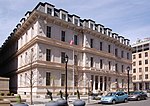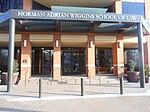Contemporary Art Museum of Raleigh

Contemporary Art Museum of Raleigh (CAM Raleigh) is a multimedia contemporary art gallery in Raleigh, North Carolina. CAM Raleigh has no permanent collection but offers exhibitions of works by artists with regional, national, and international recognition. The museum characterizes itself by the statements "We seek the most contemporary art and design. We work to curate it in a way that's always fresh. We create an ever-changing experience that is always in progress." CAM is a collaboration of the College of Design at North Carolina State University and a private 501(c)(3) organization founded in 1983 as the City Museum of Contemporary Art. Since 2011, CAM Raleigh has been housed in a 1910 warehouse in downtown Raleigh providing 20,000 square feet of space. The facility was re-purposed by Brooks + Scarpa.Exhibitions have included works by Angel Otero, Marilyn Minter, Heather Gordon, Leonardo Drew, Sarah Cain, Dorian Lynde and Jonathan Horowitz.
Excerpt from the Wikipedia article Contemporary Art Museum of Raleigh (License: CC BY-SA 3.0, Authors, Images).Contemporary Art Museum of Raleigh
West Martin Street, Raleigh Warehouse District
Geographical coordinates (GPS) Address Phone number Website Nearby Places Show on map
Geographical coordinates (GPS)
| Latitude | Longitude |
|---|---|
| N 35.776944444444 ° | E -78.645694444444 ° |
Address
CAM Raleigh
West Martin Street 409
27601 Raleigh, Warehouse District
North Carolina, United States
Open on Google Maps










